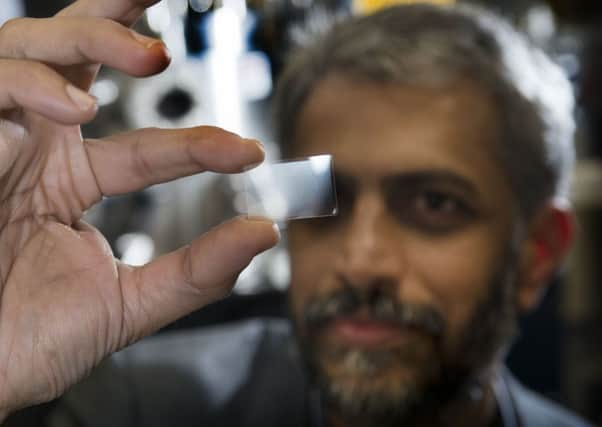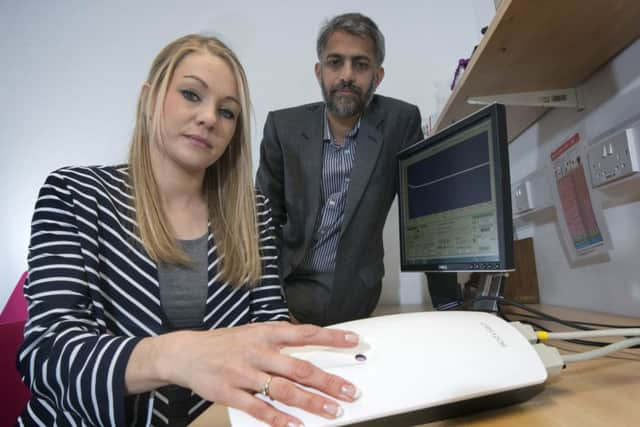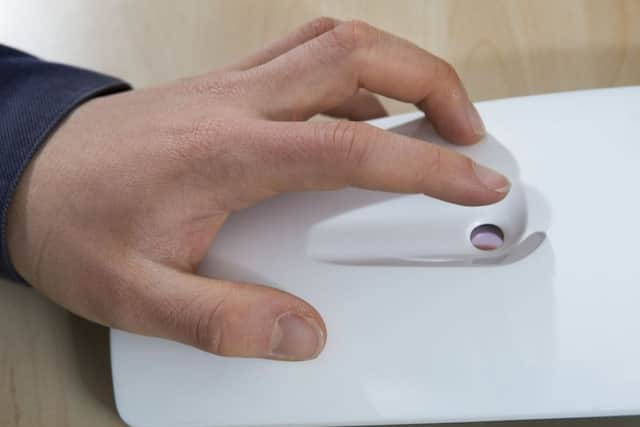New technology could end finger pricking misery for diabetics


It’s a necessary annoyance, but one that can often by overlooked on a busy day, putting the working mother’s health at risk, and the constant routine can leave her fingers painful and covered in blood blisters.
But she, and many of the 382 million people living with diabetes around the world, could soon see an end to the daily finger pricking, after a team at the University of Leeds developed a new non-invasive device that can measure blood glucose levels without penetrating the skin.
Advertisement
Hide AdAdvertisement
Hide AdIt uses a small device with low-powered lasers, and as well as improving the lives of diabetes sufferers, could provide the healthcare profession with a simple and cheaper alternative to the two current methods, finger pricking, which uses disposable sample strips, or invasive continuous monitors, which use implanted sensors that need regular replacement.


The technology even has the potential to be developed for continuous monitoring, a particular benefit for those, like Ms Ineson, with Type 1 diabetes.
The mother-of one, 32, of Horsforth, Leeds, was involved in testing the device.
She said having something as simple as a laser scanner would make her life a lot easier.
Advertisement
Hide AdAdvertisement
Hide Ad“At the moment, I am supposed to check my blood sugar levels four to six times a day,” she said. “I find it quite disruptive to have to stop everything and go through this routine of pricking my finger and taking the measurement. It depends on my mood and how busy I am but, to be honest, often I am only checking myself two times a day. That is a risk with erratic diabetes like mine.


“We have been stuck with essentially the same technology for so long. We really do need to move forward from this and this new device looks like it is going to do that.”
At the heart of the new technology is a piece of nano-engineered silica glass with ions that fluoresce in infrared light when a low-power laser light hits them.
When the glass is in contact with the users’ skin, the extent of fluorescence signal varies in relation to the concentration of glucose in their blood. The device measures the length of time the fluorescence lasts for and uses that to calculate the glucose level in a person’s bloodstream without the need for a needle. This takes less than 30 seconds.
Advertisement
Hide AdAdvertisement
Hide AdProfessor Gin Jose, of the University of Leeds, said: “The glass used in our sensors is hardwearing, acting in a similar way as that used in smartphones. Because of this, our device is more affordable, with lower running costs than the existing self-monitoring systems.
“Currently, we are piloting a bench top version in our clinical investigations but aim to develop two types of devices for the market. One will be a finger-touch device similar to a computer mouse. The other will be a wearable version for continuous monitoring.
“This wearable device would then be just one step from a product which sends alerts to smart phones or readings directly to doctors, allowing them to profile how a person is managing their diabetes over time.”
A pilot study at Leeds Institute of Cardiovascular and Metabolic Medicine, under the supervision of Professor Peter Grant, suggested that the new monitor has the potential to perform as well as conventional technologies. More clinical trials are needed before it can be put on the market.
Advertisement
Hide AdAdvertisement
Hide AdProfessor Grant, a consultant diabetes specialist, said: “Non-invasive monitoring will be particularly valuable in young people with Type 1 diabetes. Within this group, those who are attempting very tight control such as young women going through pregnancy or people who are experiencing recurrent hypoglycaemia could find this technology very useful.”